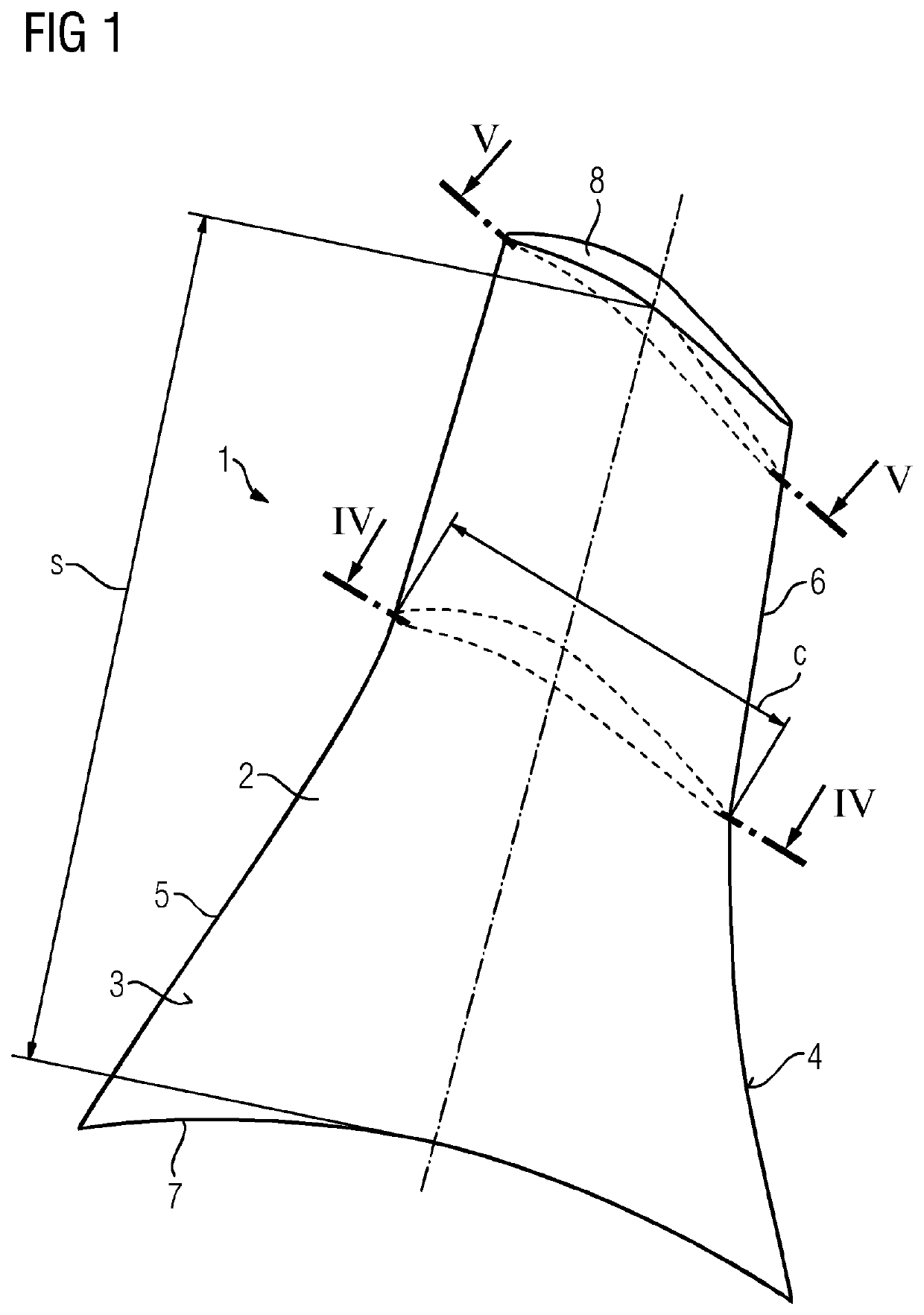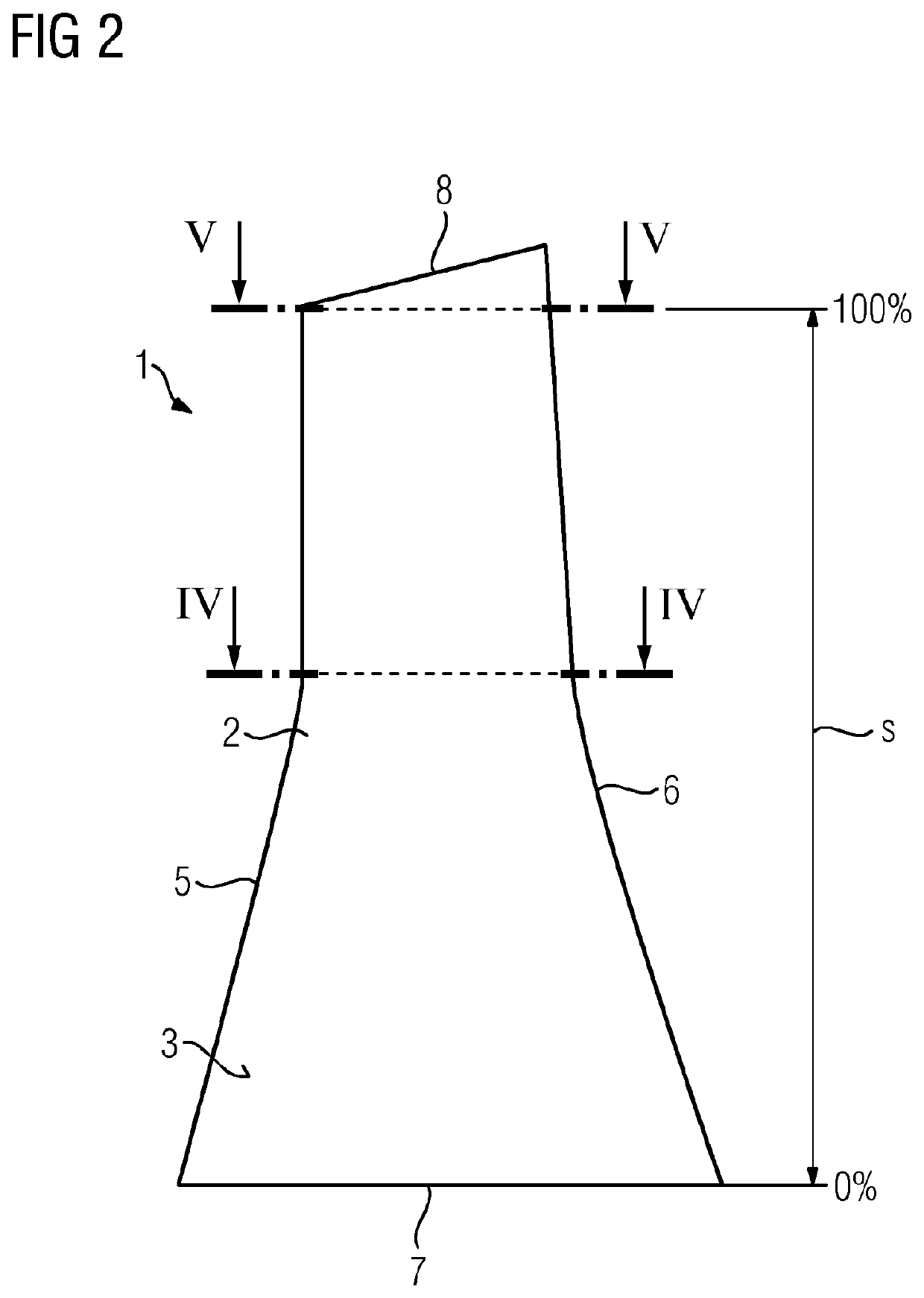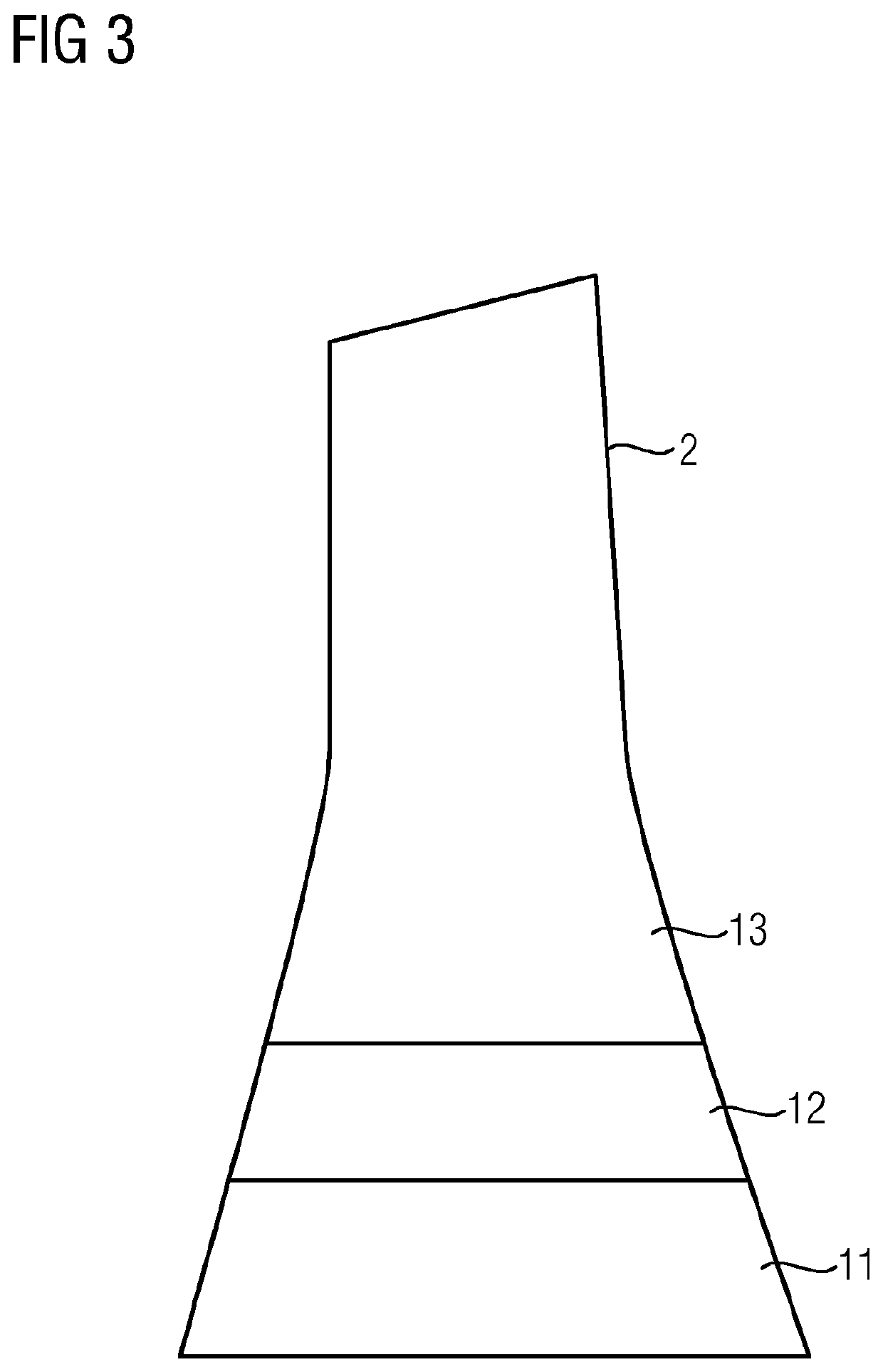Gas turbine blade and method for producing such blade
a technology of gas turbine blades and blades, applied in the direction of blade accessories, machine/engines, engine fuctions, etc., can solve the problem of low solidity
- Summary
- Abstract
- Description
- Claims
- Application Information
AI Technical Summary
Benefits of technology
Problems solved by technology
Method used
Image
Examples
Embodiment Construction
[0039]FIGS. 1 and 2 show different views of a gas turbine blade 1 according to an embodiment of the present invention. The gas turbine blade 1 comprises a metal airfoil 2 with a main wall having a first side wall 3 and a second side wall 4, which are coupled to each other at a leading edge 5 and a trailing edge 6. The airfoil 2 extends in a radial direction from a blade root 7 to a blade tip 8, defines a radial span s from 0% at the blade root 7 to 100% at the blade tip 8, has a radial span dependent chord length c defined by a straight line connecting the leading edge 5 and the trailing edge 6, and has a radial span dependent solidity ratio rs of metal area to total cross-sectional area. Moreover, the main wall defines three interior cavities 9, which are separated from each other by partition walls 10 each extending between the first side wall 3 and the second side wall 4.
[0040]The gas turbine blade 1 is a casted product, whereas the external surface of the main wall of the casted...
PUM
 Login to View More
Login to View More Abstract
Description
Claims
Application Information
 Login to View More
Login to View More - R&D
- Intellectual Property
- Life Sciences
- Materials
- Tech Scout
- Unparalleled Data Quality
- Higher Quality Content
- 60% Fewer Hallucinations
Browse by: Latest US Patents, China's latest patents, Technical Efficacy Thesaurus, Application Domain, Technology Topic, Popular Technical Reports.
© 2025 PatSnap. All rights reserved.Legal|Privacy policy|Modern Slavery Act Transparency Statement|Sitemap|About US| Contact US: help@patsnap.com



